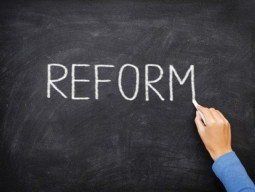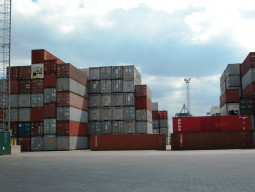
Do we have a failing economy? I could have asked this question at the very outset. I did not. We have to proceed further from this consensus conclusion. No rational discussion on the Pakistani economy can take place without such a consensus conclusion.
If Pakistan is facing an ever mounting debt without resources to retire even a small portion of it, refusing to arrive at a consensus on the failure of this economy would be sleeping over an active volcano.
As I write these lines, a marriage party is staging a sit-in on the railway track of the Multan Railway Station. They are protesting over a cubicle booked by them missing from the Karachi-bound train. All Pakistanis protest one way or the other due to absence of progress in their lives. They take its visitation in Pakistan for granted.
Progress and prosperity come on the wings of a toil planned with foresight and capacity to build a successful future. Planning, capacity and foresight have always been missing from the Pakistani profile, so why complain about a destiny Pakistan embraces.
How can this country be prevented from courting this destiny? Simple, we must take a deeper and wider view of the institutional, technical and demographic aspects of the economy.
As I write this part of the article, Prime Minister Shahid Khaqan Abbassi complains in a telecast interview that the executive is ‘paralysed’. Does the executive plan for a better Pakistan? Does it hold itself accountable? Can an executive clashing with the institutions conducting accountability plan for a better Pakistan?
These are just rudimentary questions. Get deeper into the issue and you will find that the entire state has become an impossible web. It has been unable to develop the capacity to build institutional responses to problems in the economy.
That is why international institutions monitoring the Pakistani economy and systems blatantly paint a sorry picture of this country. “Foreign investors in Pakistan report that the wide array of federal and provincial taxes and tax regulations are difficult to navigate”, says the Ease of Doing Business Index.
“Construction permits in Karachi require 11 procedures, take an average of 222 days, and cost 190.4% of per capita income (over $2,500 based on 2013 World Bank Gross National Income per capita). Tax assessment procedures often lack transparency, resulting in discrimination among taxpayers, inefficiency, and corruption. Attempts to reform the tax system date back to the 1980s but have failed to deliver significant results, except for an increase in indirect (i.e. sales) taxes. Pakistan has one of the lowest tax-to-Gross Domestic Product (GDP) ratios in the world, approximately 10.4% in 2013. The tax regime is discriminatory and poorly organised. Multinational corporations shoulder the largest portion of the tax burden”.
No bureaucrat or politician has ever confronted such evaluations with concrete evidence to the contrary. And none has ever listed these evaluations as areas of urgent business for the state of Pakistan. Why is that?
That is because the state of Pakistan is dysfunctional; this dysfunctional state gobbles up ever increasing amounts of tax money, non-tax revenues, aid money and grants. And it is not accountable for such a conduct.
Where does a probable, realistic and functional turnaround for such a failing country start? Where does institutional, technical and demographic reform begin; is there a model for such an exercise? Afghanistan, Iraq, Libya, and Somalia have been the target of implosion and externally planned devastations. Does Pakistan await a turnaround model from those chaos-stricken lands?
If waiting for such a model is no panacea, what is the first single step in the direction of functional reform Pakistan could be capable of taking? Institutional, technical and demographic changes Pakistan needs can start by slashing down the current expenditure of the state. Can you make this state go for it?
These are questions parliamentarians and media persons must start putting to the state and the people, if they can. Can they? I do not think so. As a regular watcher of the mainstream media and the parliamentary committees, I see little passion for initiating a meaningful reform agenda that focuses on the fabulous current expenditure of a country where people are simply incapable of financing it.
The purpose of this article is: taking up one initial idea for achieving institutional, technical and demographic changes. And that idea cannot be other than opting for slashing the current expenditure. I am not talking of the development budget, which is only 18% of the total annual federal fiscal plan.
The National Assembly Finance Committee was told the other day that China spends the largest chunk of its budget on public procurement for which production is subsidised and protection is sought by banning imports. It is an idea to follow but who is going to raise the slogan for it?
It is the simplest trick of development and institutional reform for technical and demographic change in a country feeding the largest population on planet earth. Does Pakistan lack leadership that can copy this simple idea? What is your answer? If yes, you concede the worst doom for statehood on this planet.
The writer has worked with major newspapers and specialises in the analysis of public finance and geo-economics of terrorism
Published in The Express Tribune, March 12th, 2018.
Like Business on Facebook, follow @TribuneBiz on Twitter to stay informed and join in the conversation.


















COMMENTS
Comments are moderated and generally will be posted if they are on-topic and not abusive.
For more information, please see our Comments FAQ